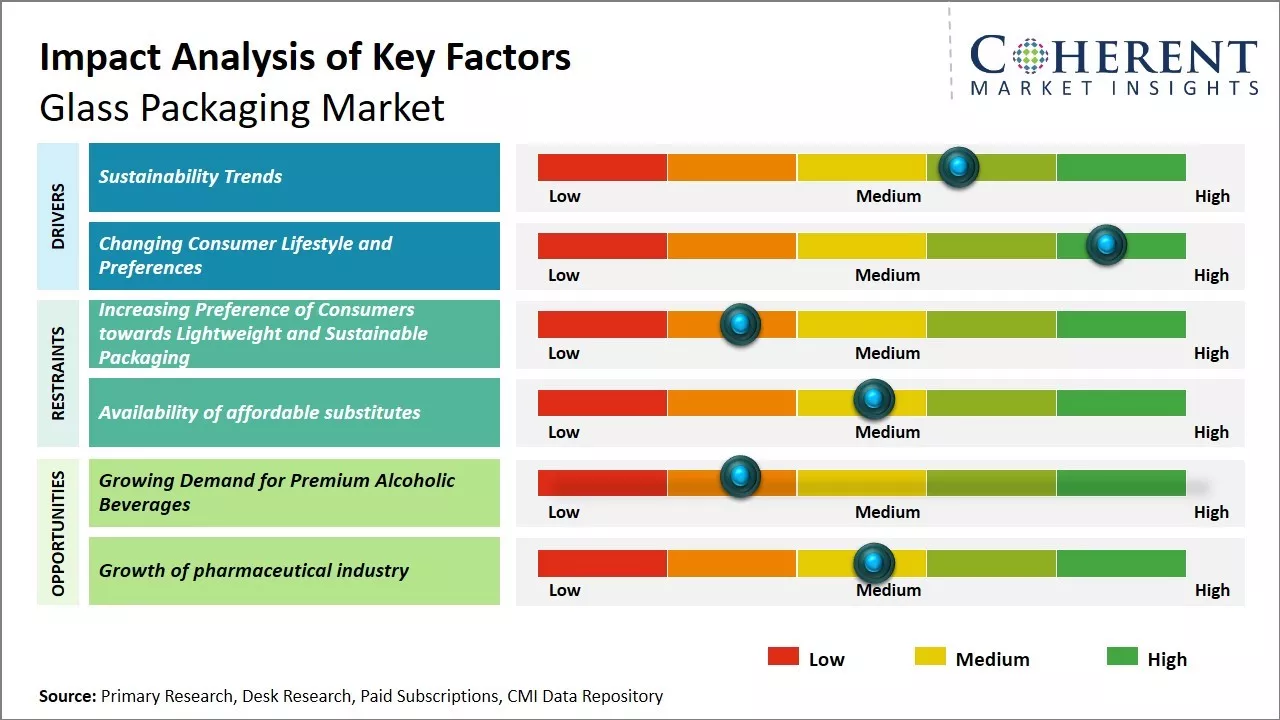The Glass Packaging Market is estimated to be valued at USD 75.07 Bn in 2025 and is expected to reach USD 100.87 Bn by 2032, exhibiting a compound annual growth rate (CAGR) of 4.3% from 2025 to 2032.

To learn more about this report, Request sample copy
The glass packaging market is expected to witness significant growth over the forecast period. Glass is considered as one of the most sustainable packaging materials used for beverages and food products. Glass does not leach chemicals into the products due to which it is highly preferred for the packaging of premium food and beverages. The increasing demand for premium alcoholic and non-alcoholic beverages is expected to drive the growth of the glass packaging market. However, glass is heavier in weight as compared to other alternatives like plastic which increases the cost of transportation. The development of lightweight glass packaging solutions through technological advancements provides growth opportunities for the players in the glass packaging market over the coming years.
Sustainability Trends
The rising awareness about environmental protection and sustainability has significantly impacted consumer preferences and buying behaviors across the globe. There is a growing segment of conscious consumers who consider the environmental and social impact of the products and packaging solutions used. Glass is emerging as one of the most sustainable packaging formats owing to its high recyclability rate and infinite recyclability property. Glass can be recycled endlessly without any loss in quality or purity. This prevents glass containers from ending up in the landfills or incinerators. The recycled glass content can be utilized again and again to manufacture new glass packaging products. With sustainability becoming a key agenda of packaging producers, they are increasingly preferring glass as the material of choice. The recyclability and reusability features allow manufacturers lower carbon footprint of their packaged products and meet the demand of eco-conscious consumers. This growing emphasis on sustainable packaging is steering the demand for glass containers especially for food and beverage applications.
Joining thousands of companies around the world committed to making the Excellent Business Solutions.
View All Our Clients